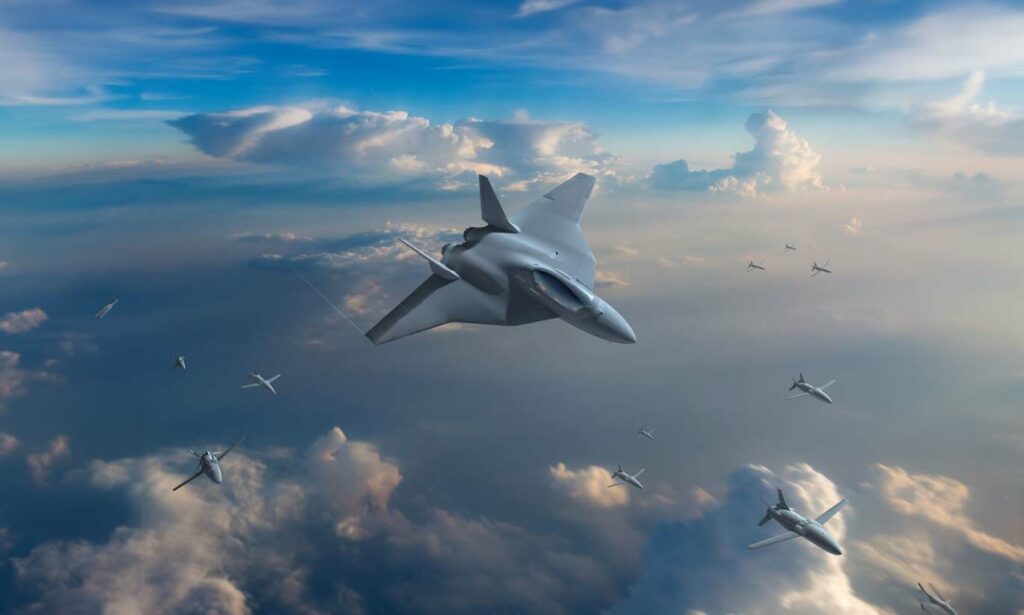
Explore the Future Combat Air System (FCAS), a groundbreaking European defense project aiming to revolutionize air combat with advanced fighter jets and UAVs.
The FCAS is a collaborative project led by France, Germany, and Spain, with major defense companies like Dassault Aviation, Airbus, and Indra Sistemas at the helm. It aims to revolutionize air combat capabilities through a ‘system of systems’ approach, integrating advanced fighter jets, unmanned aerial vehicles (UAVs), and interconnected networks.
Technical Specifications and Innovations
Next-Generation Fighter Aircraft
- Speed and Stealth: The centerpiece of FCAS, the next-generation fighter jet, is anticipated to reach speeds exceeding Mach 2 (1522.88 mph or 2450 km/h). Its design will incorporate stealth technology, utilizing materials and structures that minimize radar signature.
- Advanced Avionics: Equipped with state-of-the-art avionics, the aircraft will feature enhanced sensory and processing capabilities, possibly integrating AI for improved decision-making.
- Weapons Systems: Expectations are that the aircraft will carry a mix of conventional and futuristic weapons, possibly including directed energy weapons (lasers). Drones (Remote Carriers)
- Autonomy and Swarm Capability: These drones will have advanced AI for autonomous operations, including swarm tactics, where multiple drones coordinate to achieve complex objectives.
- Versatility: Designed for a variety of roles such as surveillance, electronic warfare, and offensive operations, these drones will enhance the flexibility of FCAS. Connectivity and Network-Centric Warfare
- Data Fusion and Communication: The core of FCAS’s strength lies in its network-centric approach, with robust data links enabling real-time sharing of intelligence across platforms.
- Integration with NATO and Other Systems: Ensuring compatibility with NATO systems and other allied platforms will be crucial for joint operations and strategic interoperability.

Current State of the Program
- Development Phases: As of 2023, the FCAS is in its development and prototyping phase. Partnerships between participating nations and companies are focused on aligning technological goals and specifications.
- Investment and Resources: Data on the current funding and resource allocation is critical to understanding the project’s scale. It’s important to note the financial and technological commitments of the participating nations.
Challenges and Considerations
- Technical Challenges: The integration of such diverse and advanced technologies presents significant engineering challenges. Issues such as ensuring secure data links and effective AI integration are pivotal.
- Political and Economic Factors: The collaboration between multiple nations brings complexities in terms of budgetary commitments, technology sharing, and strategic priorities.
Future Perspectives
- Operational Timeline: The aim is to have the FCAS operational by 2040, replacing current fleets like the Rafale and Eurofighter.
- Impact on Air Warfare: The introduction of FCAS is expected to significantly alter the dynamics of air combat, with implications for global air power balances.
- Technological Advancements: The program’s success could spur further advancements in aerial combat technologies, potentially setting new standards in fighter aircraft and UAV capabilities.
Incorporating these aspects, the FCAS represents a transformative endeavor in modern warfare technology. Its success or failure will likely have a profound impact on future military strategies and the global aerospace industry.
War Wings Daily is an independant magazine.